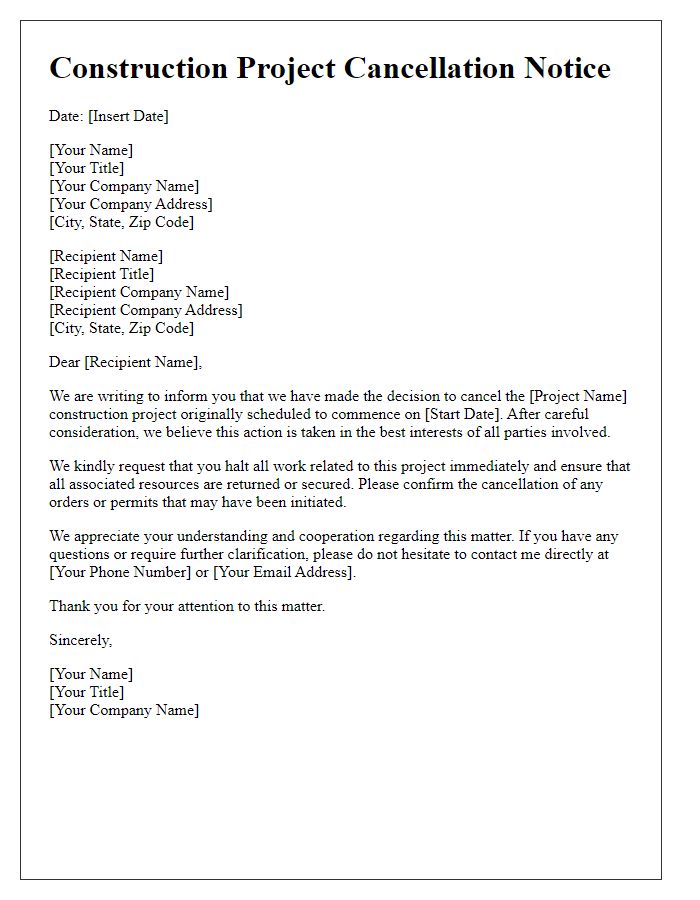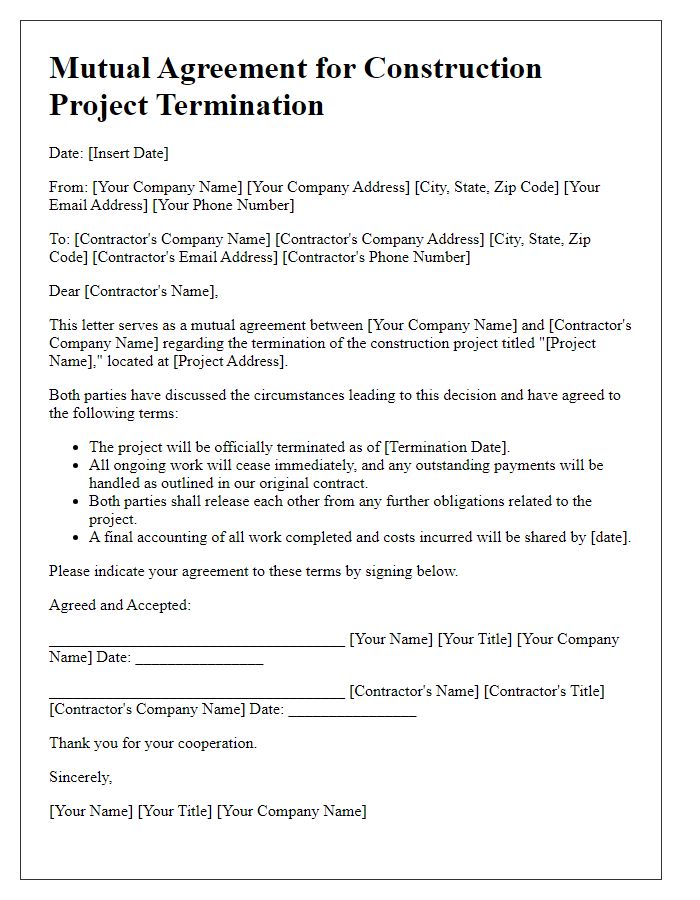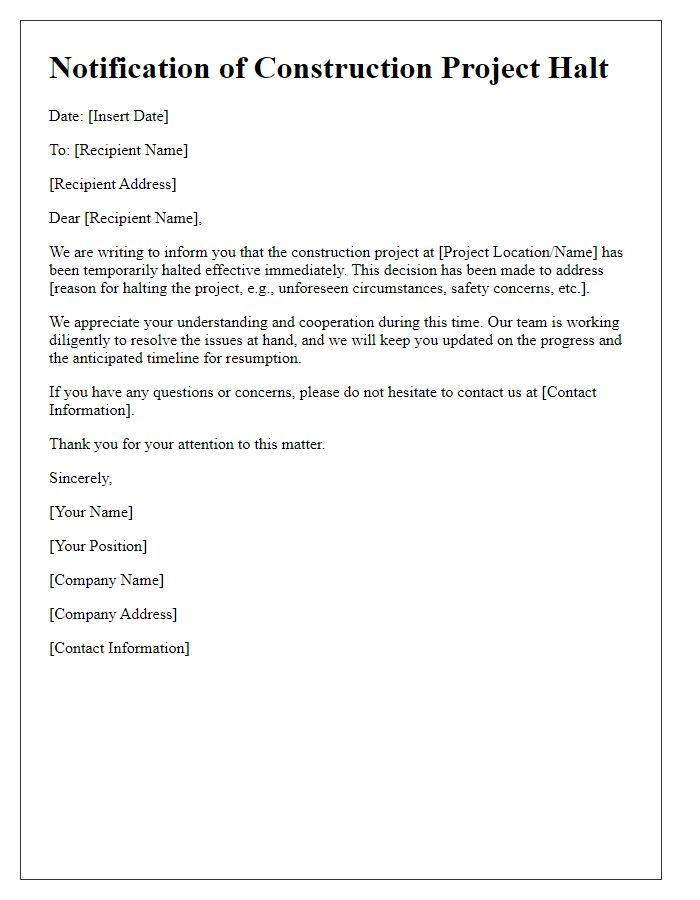Navigating the complexities of a construction project can often lead to unexpected changes, including the difficult decision to terminate a project for convenience. Whether driven by budget constraints, shifts in company focus, or unforeseen circumstances, it's essential to handle this process with clarity and professionalism. In this article, we'll explore a letter template that ensures effective communication while respecting all parties involved. Join us as we delve into the nuances of construction project termination and provide you with the tools to approach such situations with confidence.

Clear Reason for Termination
The termination of a construction project for convenience can arise due to various clear reasons, such as budget overruns, changes in project scope, or shifting organizational priorities. Fund allocation may prevent further investment in a project initially valued at $5 million. Changes in local regulations may impose additional compliance costs. Contractor performance issues could hinder project timelines, leading to dissatisfaction among stakeholders. Termination for convenience allows project owners to halt the construction without legal repercussions, facilitating a transition to alternative solutions or contractors while adhering to contractual terms and maintaining professional relationships.
Effective Termination Date
Termination of a construction project for convenience signifies the client's decision to conclude the agreement without cause. This action typically arises from factors such as budgetary constraints, changing business needs, or strategic reevaluations. The Effective Termination Date marks the day (often specified in the contract, such as a specific calendar date or a period following the notice) when all contractual obligations cease. Following this date, the contractor must halt all work, secure the job site, and complete any required documentation regarding materials, labor already incurred, and costs accumulated up to that point. Project stakeholders must address outstanding payments and settle any disputes or unforeseen consequences that may arise after the termination. This procedure ensures a smooth transition while aiming to minimize financial repercussions for all parties involved.
Reference to Contractual Clauses
Construction project termination for convenience involves formally notifying involved parties about ending a contract. Reference to specific contractual clauses is crucial in this context. For instance, Clause 12.1 outlines the employer's right to terminate for convenience. This clause allows the employer to cease work without cause, following proper notification procedures. Additionally, Clause 14.3 details compensation mechanisms for work completed up to the termination date, ensuring fair financial settlement. Furthermore, it is essential to comply with any stipulated notice periods--usually outlined in Clause 15--to avoid legal repercussions. Properly referencing these clauses in the termination notice safeguards the interests of all parties involved.
Obligations and Liabilities Settlement
Termination of a construction project can lead to complex obligations and liabilities for all parties involved. The decision to terminate may arise due to various factors including budget constraints, scheduling conflicts, or unforeseen circumstances like natural disasters impacting project timelines. In such situations, it is crucial to review contractual obligations (such as clauses related to convenience termination) to understand rights and responsibilities. Financial liabilities may include outstanding payments for work completed, reimbursement for materials purchased, and penalties for any breach of contract. Legal considerations also come into play, as parties may need to address potential claims or disputes that arise post-termination. Effective communication with stakeholders, including subcontractors and suppliers, is vital in ensuring a smooth termination process and minimizing further liabilities.
Request for Final Documentation and Equipment Return
Upon termination of the construction project, the parties must ensure the return of all project-related equipment and documentation. The contractor must prepare a comprehensive inventory list of all materials, tools, and machinery utilized, including those valued over $5,000, such as excavators or concrete mixers. The final documentation must include all permits issued by local authorities, project plans with revisions (if any), and change orders signed during the project lifespan. Moreover, it is essential to compile a final project report that outlines milestones achieved and any outstanding tasks. All documentation and equipment must be returned by the stipulated date, typically within 30 days of termination, to ensure a smooth closeout process and compliance with contract terms.
Letter Template For Construction Project Termination For Convenience Samples
Letter template of project termination notice for construction agreement.

Letter template of termination for convenience in construction contract.

Letter template of construction project cancellation due to convenience.

Letter template of mutual agreement for construction project termination.

Letter template of construction contract cessation for convenience reasons.

Letter template of termination letter for construction work convenience.

Letter template of cancellation of construction services for project convenience.







Comments